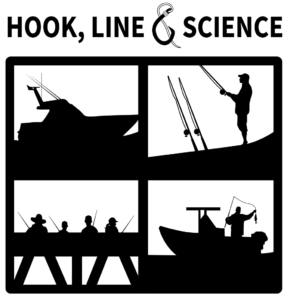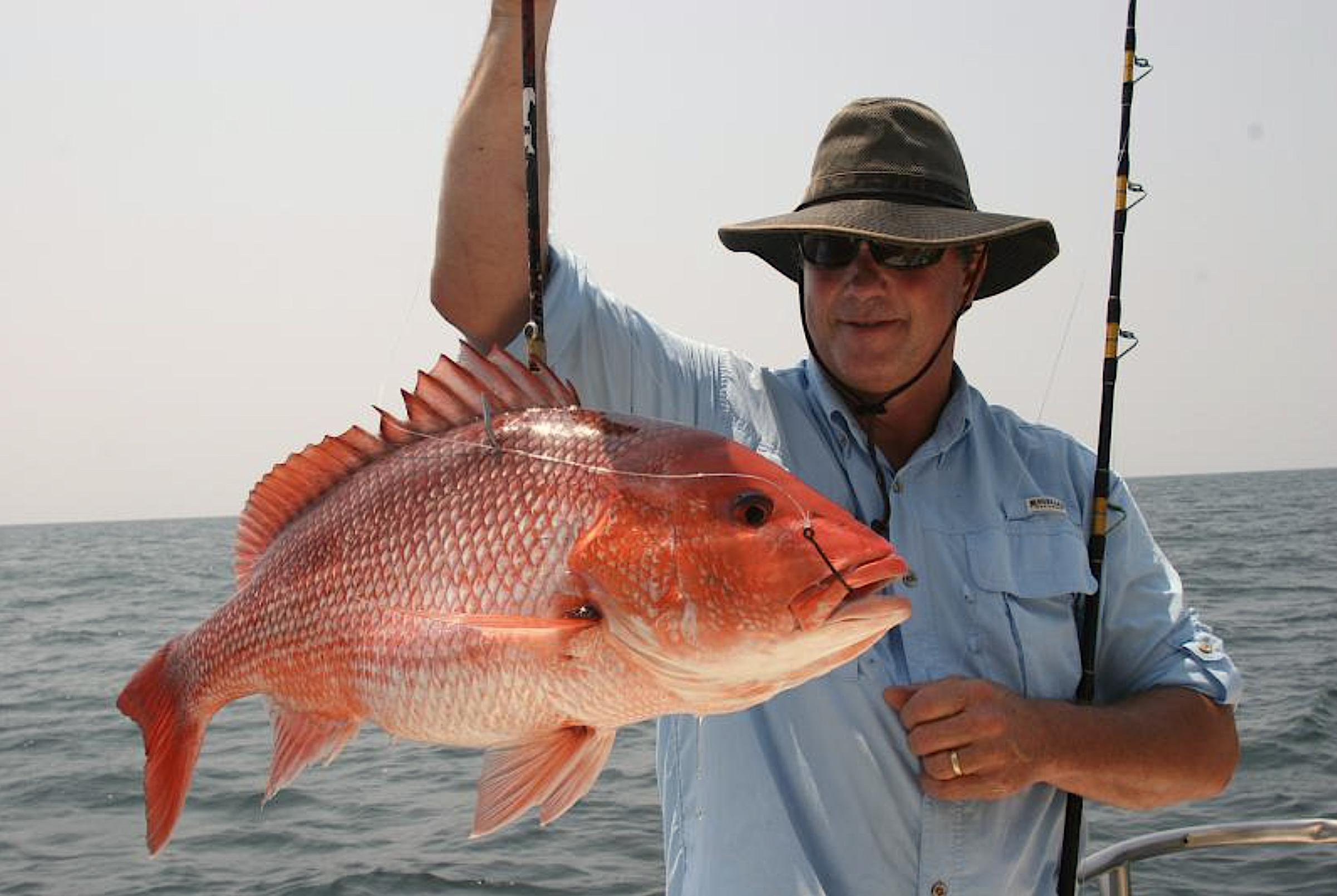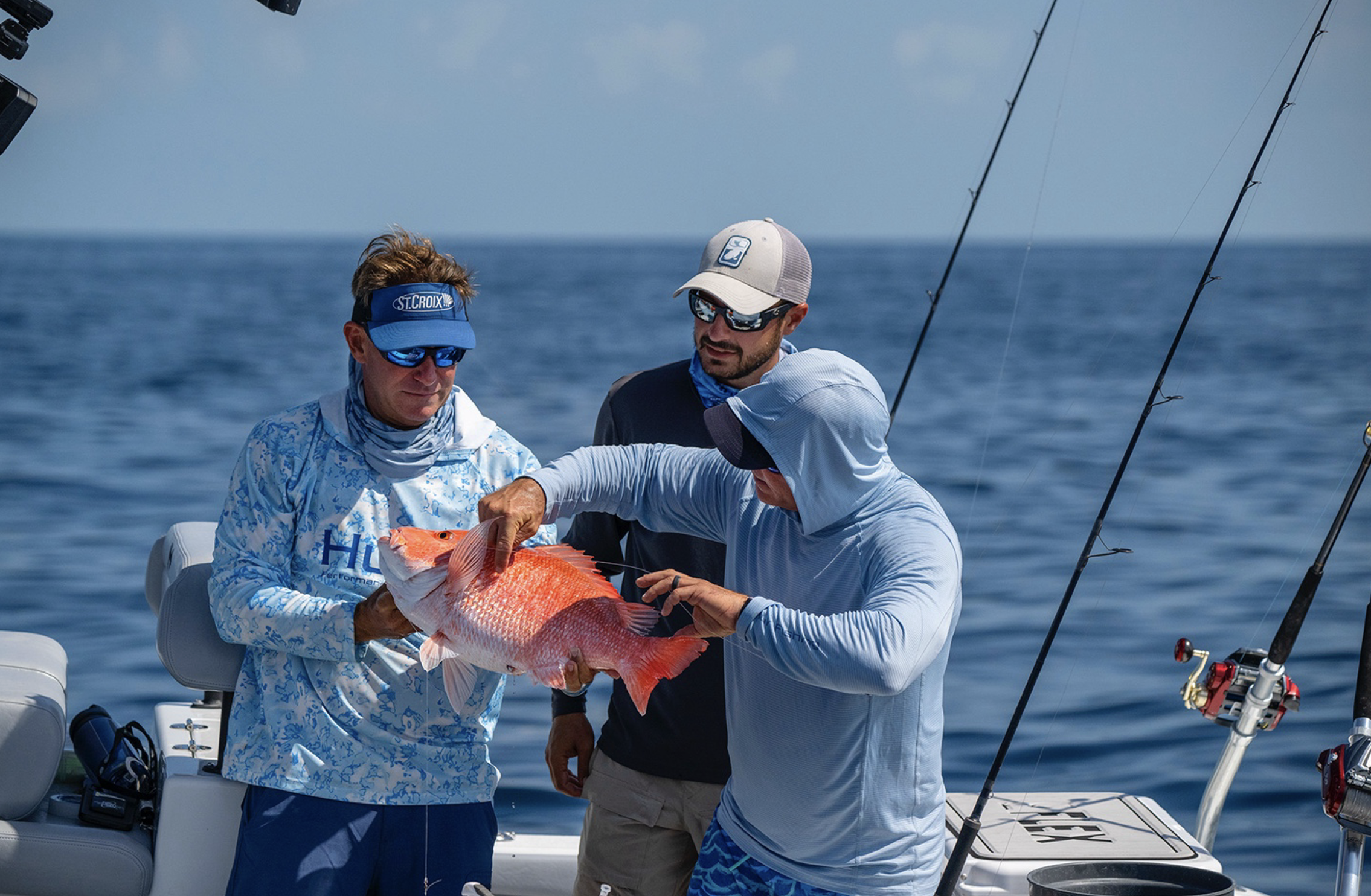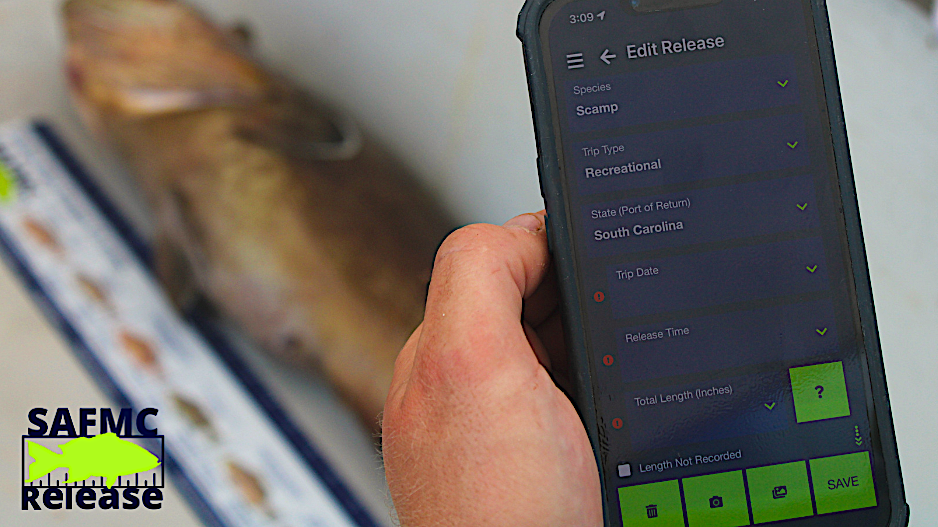Things to know in advance of the 2024 one-day red snapper season.
The Problem
It’s called the Ideal Gas Law. Bubbles of gas in the water expand as they rise from high-pressure deep water into lower air pressure on the surface. This basic law of physics affects deep-sea divers, fishers, and even fish.
Some fish have swim bladders that are connected to the gut and can “burp” to relieve gas pressure. Other fish can’t, and gas builds in the swim bladder. Think back to that rising bubble. A swim bladder — a gas-filled organ that allows a fish to move vertically in the water column — is much like that bubble. The bladder can double or triple in size because of the swift change in pressure. Deepwater anglers see examples of this “barotrauma” when a fish’s swim bladder balloons as they reel it in.
Fish susceptible to this include important recreational species such as red snapper. When these fish are released with the equivalent of something as large as a beach ball in their guts, they can’t swim back down. As they drift at the surface, they become easy prey for hungry predators.
The 2024 one-day red snapper season in South Atlantic waters is this Friday, July 12. The recreational bag limit is ONE fish per person. If you are lucky enough to head offshore to fish for snapper-grouper species, follow these helpful tips below to improve that fish’s chance of survival.
The Solution
Using proper catch-and-release practices reduces waste in the fishery and leads to improved survival rates of released fish. Even a 5% increase in fish that survive, for instance, would save 100,000 red snapper each year.
The first step is to recognize when a fish is struggling with barotrauma. Generally, fish caught deeper than 30 feet will suffer some effects of barotrauma. Signs include:
- Bloated abdominal area
- Bulging eyes and/or
- Balloon-like tissue protruding from the mouth or anus.
If there are signs of barotrauma, the chance of survival increases when releasing a fish through use of a descending device — a tool that returns a fish to its depth at capture, thus recompressing the organs and reversing barotrauma. Descending devices can range from simple and cheap — weighted hooks or upside-down milk crates — to more expensive tools available on the market, such as the SeaQualizer.
Check out these How To videos.
Additional Best Practices from the South Atlantic Fishery Management Council
- Plan Ahead: Always expect to release a fish on any trip and make sure to have the proper equipment such as a knotless and rubberized landing net, a descending device, a dehooking tool, and circle hooks.
- Handling Fish: Hold fish with wet hands or rubberized gloves and make sure to support the body by holding it horizontally. Take any pictures quickly and get the fish back in the water ASAP. Limiting air exposure increases the chance of survival.
- Avoid non-target species: Develop the skills to target the size and species you desire and limit interactions with non-target species.
- Landing Fish: Don’t play fish to exhaustion in case the fish will need to be released.
BY SARA MIRABILIO & SCOTT BAKER
This and more information is available on the South Atlantic Fishery Management Council’s Best Fishing Practices website.
Lead photo: red snapper, courtesy of NOAA.
The text from Hook, Line & Science is available to reprint and republish at no cost but only in its entirety and with this attribution: Hook, Line & Science, courtesy of Scott Baker and Sara Mirabilio, North Carolina Sea Grant. HookLineScience.com

- Categories:




